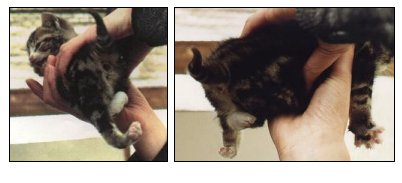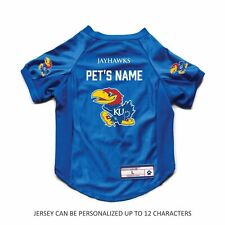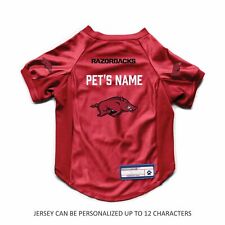Twisted Limbs in Kittens

However, as well as affecting moggies, twisted limbs have been noted in a wide range of breeds including Persians/Himalayans, Exotic Shorthairs, Korats, Bengals, Abyssinians/Somalis, British Shorthairs, American Shorthairs, Burmese, Siamese/Orientals and Turkish Vans. It is not limited to domestic cats and has apparently been noted in a captive-bred tiger cub where treatment was partially successful (the hind limbs apparently remaining weak). Twisted limbs have been reported in other domestic animals, in livestock and in zoo animals.

Occurrence and Frequency of Twisted Limb Kittens
In cats, the condition is not geographically limited. Twisted limb kittens have been, and continue to be, reported around the world. As well as Sophia in the UK, cases have been reported in the USA, Canada, Australia, New Zealand, South Africa, Europe (including Eastern Europe), Hong Kong, Japan, Israel and the Middle East.
Sometimes more than one kitten in a litter is affected. Cat rescuer Beth reported that three out of four kittens born to her rescued feral cat were affected. The feral mother abandoned three kittens right after birth and they were taken in by Beth. The mother and the fourth kitten were found hidden in the hay barn two days later. Two of the three abandoned kittens had crooked hind limbs. The fourth kitten, i.e. the one not abandoned, also had crooked hind limbs. Beth’s vet had not seen this condition previously and suggested leaving the kittens for a few weeks to see if the limbs straightened out of their own accord. At four days old, the kittens’ legs can be moved into the correct position.
The occurrence of the condition in pedigree cats indicates that it is not restricted to poorly nourished cats. It was initially thought that Sophia’s mother, a stray, had been poorly nourished and that this contributed to Sophia’s condition e.g. insufficient calcium for proper bone growth. Sophia’s sister was perfectly normal and the mother showed no depletion of calcium in her own bones. In addition, Sophia’s forelimbs were robust rather than fragile.
Many vets will never see a twisted limb kitten and are unfamiliar with the condition, thus when confronted with a twisted limb kitten, many vets immediately advise euthanasia. Most vets have believed the deformities to be permanent and not correctable. Some twisted-limb kittens, like Sophia, would have had had gross deformities combined with internal abnormalities so that euthanasia is the only humane option.
Although the success in rehabilitating some kittens might suggest that others were needlessly euthanized, the actuality is that not all twisted limb kittens will grow out of the trait or be cured by splinting and physiotherapy. In Sophia’s case, the entire hind end was affected, including her lower bowel. Just because some kittens are treatable, does not mean that all kittens can have the condition corrected. The converse is also true – just because Sophia was not treatable does not mean that all twisted limb kittens are untreatable. The earlier the condition is discovered, ideally at only a few days old, the better the chance of treatment being successful.
Forelimb Twisting Due to Radial Hypoplasia (Twisty Cat)

Prognosis
Some cat lovers have suggested that the legs of all afflicted kittens eventually straighten out and become perfectly normal. Caught early enough, the condition is treatable in many kittens. If only the legs are affected, there is a better chance of correcting the deformity. However, even with intensive treatment, not all kittens will recover and a cat owner must be prepared for that possibility. Cat rescuers and shelter workers are faced with an additional problem of time, resources and funding.
Both the front legs/paws and the hind legs/paws can be affected. Sometimes a single limb is affected (unilateral), sometimes (as with Sophia) the pair of limbs is affected (bilateral). Where pairs of limbs are affected, they may be equally affected or one may be more severely affected than the other. The severity varies e.g. paws curled under or sideways, limbs stiff and extended, hind limbs in the "Lotus" (yoga) position, hind limbs appearing to be put on backwards. Sophia had one "backwards" leg and one curled underneath her.
Except for Radial Hypoplasia (Twisty Cat condition) and related conditions, the cause of twisted limbs is developmental, not genetic. It appears to be due to the kitten’s position in the womb, especially in a large litter where the womb is crowded. The developing kitten is cramped and its legs are placed awkwardly; there is no room to flex them and the tendons and ligaments become contracted from remaining in one position.
Another cause of malformed (or missing) limbs is umbilical strangulation of the limb – the umbilical cord becomes wrapped around the limb(s), restricting blood supply to those limbs. In these cases, the limb may be entirely missing though less severe cases may result in twisted or undersized limbs.
Although more than one kitten in a litter may be affected (particularly in large litters where the womb is overcrowded), there is no evidence that a mother cat will consistently produce twisted limb kittens in later litters. If she does continue to produce twisted limb kittens, there is a chance that she has an abnormal uterus which cramps the developing kittens or possibly a genetic cause e.g. affecting bone growth. In either case, spaying is recommended and (if possible) the sire’s owner should be informed in case it is a recessive gene trait. To date, apart from the forelimb condition radial hypoplasia (below), twisted limbs have been shown to be developmental abnormalities not a hereditary condition.
Treatment
If caught early, preferably at birth or within a day or two, there is a reasonable chance that the condition can be rectified with a combination of massage, physiotherapy (stretching/flexing the limb), warm compresses (to ease muscles which have locked into position) and by splinting (or more rarely pinning) the leg into the proper position.
The vet will also need to check that the kitten has feeling in the twisted limbs. The kitten may be unable to move them because the ligaments/tendons have contracted or the muscles are under-developed, locking the limb into one position. However, if the kitten cannot feel the limb, there may also be nerve or spinal damage. Spinal damage will also affect control of the tail and bowel/bladder function (only noticeable at an age when the kitten should be controlling these itself).
If the condition is treated early and the kitten is going to recover, an improvement is usually seen within days. If the limbs fail to respond to treatment and remain twisted and useless several weeks later despite regular physiotherapy/splinting, then the prognosis is poor.
If only one limb is affected and the kitten is otherwise normal, amputation of the affected limb is a possibility. If the kitten shows other serious abnormalities, especially ones relating to the internal organs, then euthanasia is recommended as soon as those abnormalities become apparent.
One thing that is certain is that the longer the elapsed time between birth and treatment of a twisted limb, the less likely it is that the kitten will recover due to atrophy of nerves and muscles. This is particularly important in rescue work where a litter is not found until the kittens are several weeks old. By that stage the twisted limbs are probably beyond correction. The rescuer must carefully weigh up the likelihood of recovery. In Sophia’s case, treatment was ineffective and euthanasia was the only humane option.
In a breeder situation, the decision to treat may be influenced by the kitten’s potential as a show or breeding animal. Its genes may be too valuable to give up without attempting treatment.
In a rescue situation, even where the twisted limbs are noted early enough to attempt treatment, there remains the issue of (wo)manpower, time and funding of any veterinary support to treatment. Where devoting time and energy to a single kitten would be to the detriment of dozens of healthy kittens, the euthanasia of a potentially treatable kitten may be an agonizing, but necessary decision.
Radial Hypoplasia presents different issues for the rescuer/breeder. Unlike twisted hind limbs, it cannot be rectified by splinting and physical therapy. It is an inherited trait. The individual kittens should be assessed for quality of life and euthanized if necessary. The parent cats should not be bred from again in order to eliminate the defect from breed lines.













